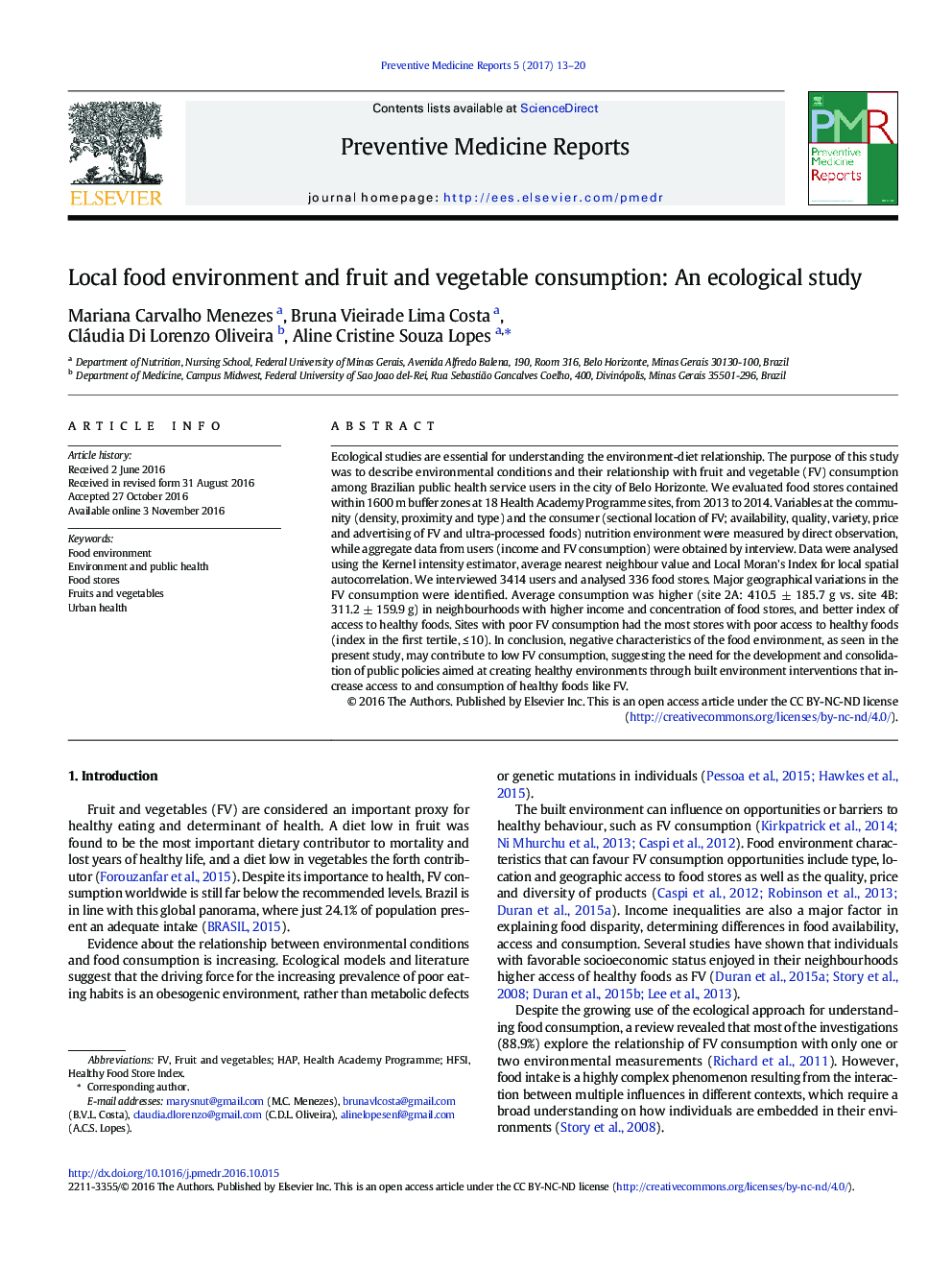| Article ID | Journal | Published Year | Pages | File Type |
|---|---|---|---|---|
| 5723747 | Preventive Medicine Reports | 2017 | 8 Pages |
â¢A comprehensive assessment of food environment in a Latin American city is proposed.â¢There were significant geographic variations in the food environment.â¢Limited access to healthy food may possibly have reflected in lower FV consumption.â¢FV intake was higher in areas with higher income and better quality of food stores.â¢Geographic distribution of stores was important: higher intake in clustered areas.
Ecological studies are essential for understanding the environment-diet relationship. The purpose of this study was to describe environmental conditions and their relationship with fruit and vegetable (FV) consumption among Brazilian public health service users in the city of Belo Horizonte. We evaluated food stores contained within 1600 m buffer zones at 18 Health Academy Programme sites, from 2013 to 2014. Variables at the community (density, proximity and type) and the consumer (sectional location of FV; availability, quality, variety, price and advertising of FV and ultra-processed foods) nutrition environment were measured by direct observation, while aggregate data from users (income and FV consumption) were obtained by interview. Data were analysed using the Kernel intensity estimator, average nearest neighbour value and Local Moran's Index for local spatial autocorrelation. We interviewed 3414 users and analysed 336 food stores. Major geographical variations in the FV consumption were identified. Average consumption was higher (site 2A: 410.5 ± 185.7 g vs. site 4B: 311.2 ± 159.9 g) in neighbourhoods with higher income and concentration of food stores, and better index of access to healthy foods. Sites with poor FV consumption had the most stores with poor access to healthy foods (index in the first tertile, â¤Â 10). In conclusion, negative characteristics of the food environment, as seen in the present study, may contribute to low FV consumption, suggesting the need for the development and consolidation of public policies aimed at creating healthy environments through built environment interventions that increase access to and consumption of healthy foods like FV.
